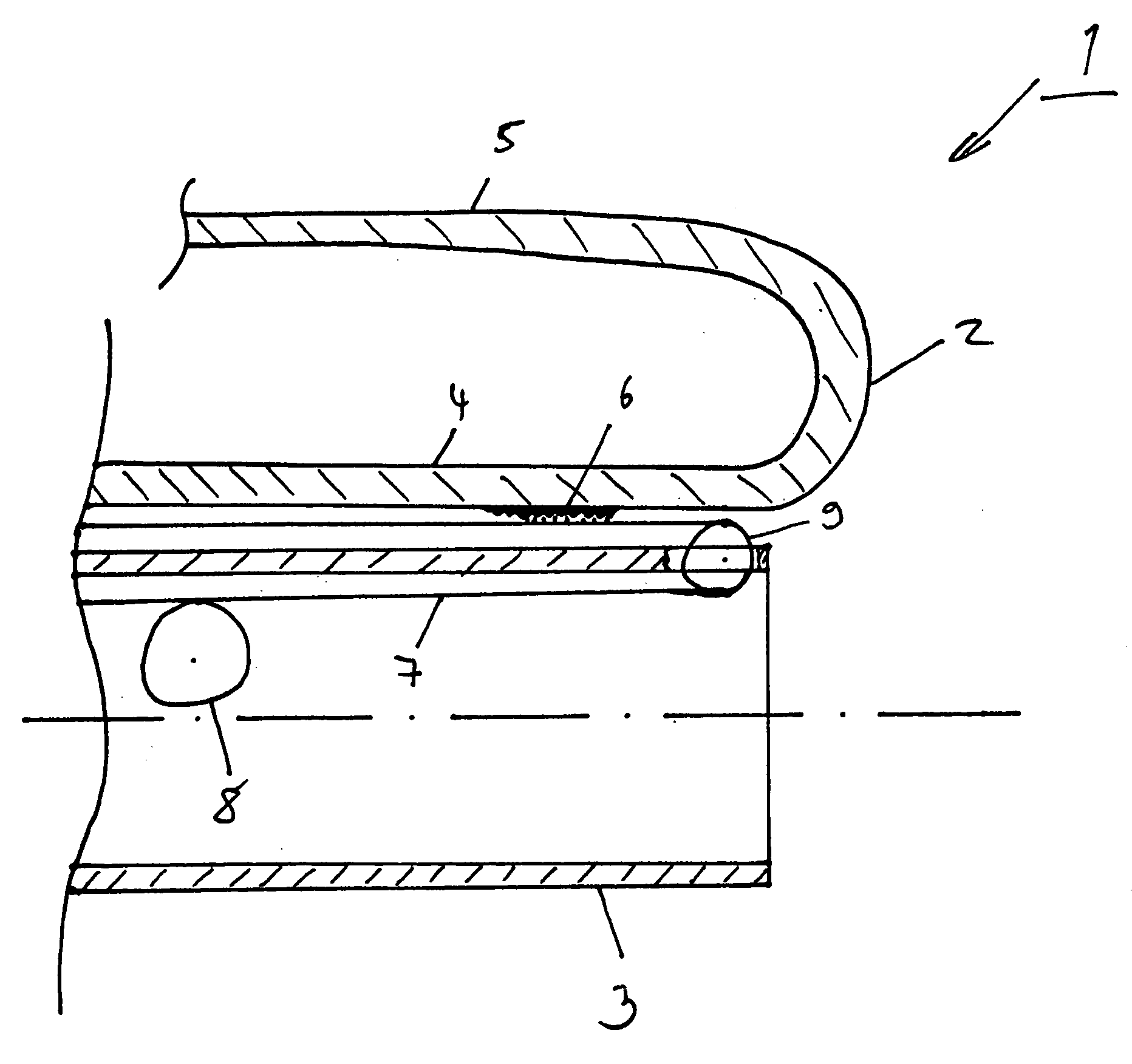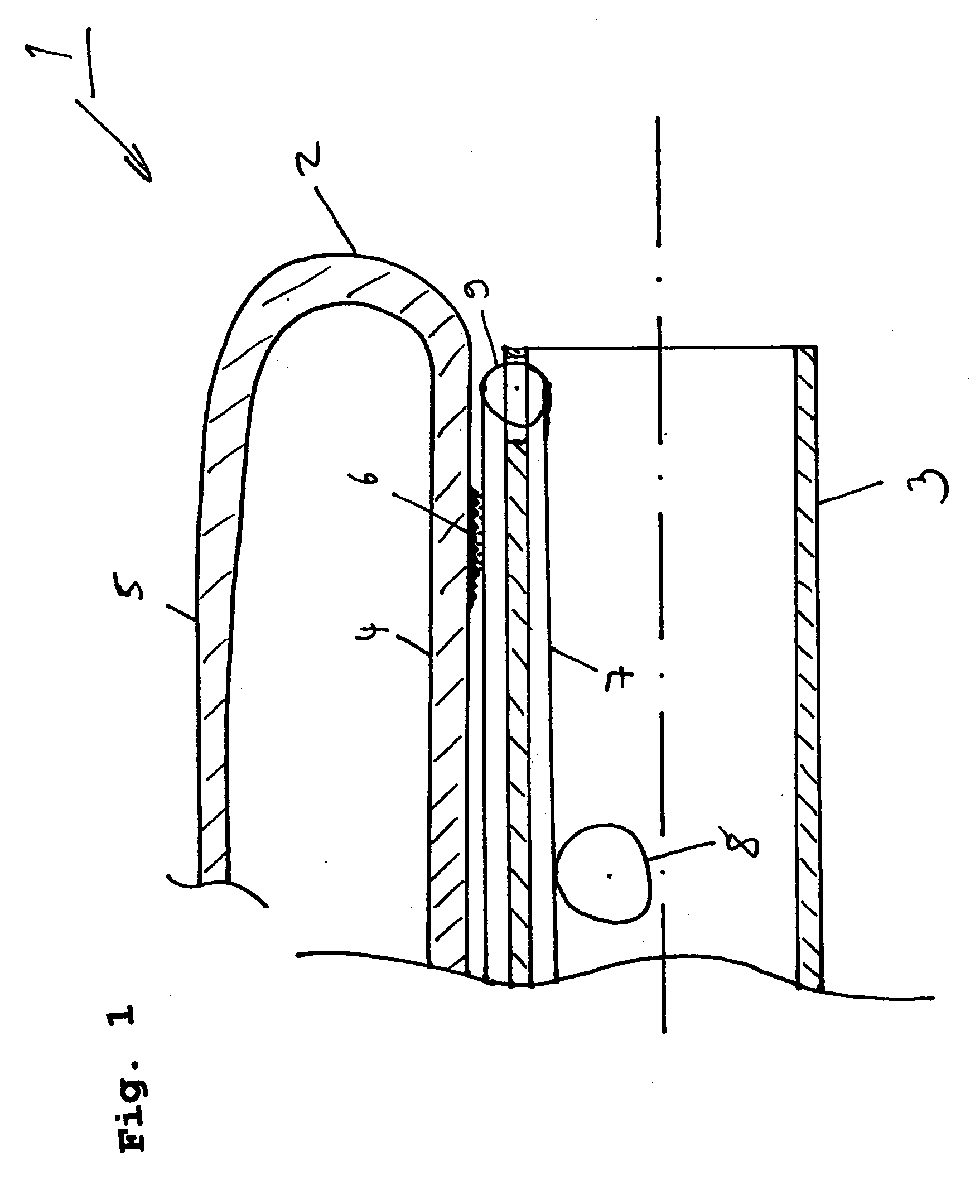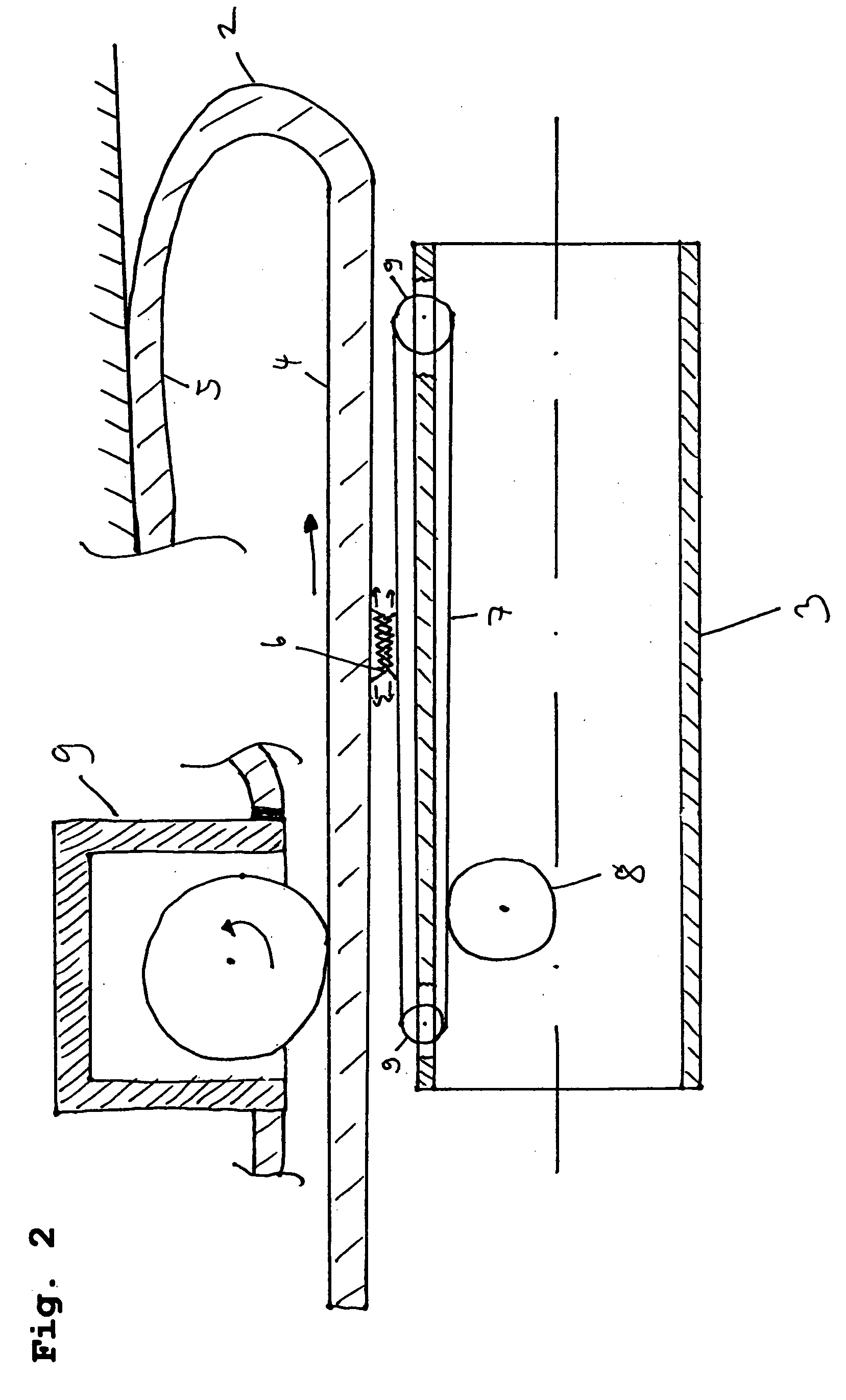Endoscope comprising a longitudinally guided everting tube
a technology of longitudinal guide and endoscope, which is applied in the direction of endoscope, stent, medical science, etc., can solve the problems of inability to examine patients, deterioration of drive power of drive means, and pain for patients to be examined, so as to reduce the friction between the two profiles
- Summary
- Abstract
- Description
- Claims
- Application Information
AI Technical Summary
Benefits of technology
Problems solved by technology
Method used
Image
Examples
first embodiment
[0037] In accordance with the invention, between the radially inner portion 4 of the everting tube 2 and the endoscope shaft 3 there is an operative connection which is composed, on the one hand, of an engaging means 6 and, on the other hand, of a continuous conveyor 7 disposed at the endoscope shaft 3 which extends in the longitudinal direction of the endoscope shaft and acts as a longitudinal guiding means. The engaging means 6 consists of two meshing components disposed at the everting tube 3 and at the continuous conveyor 7, respectively. The component of the engaging means 6 disposed at the everting tube is arranged merely at one side of the everting tube, i.e. at the outside of the everting tube and extends at least in sections along the radially inner tube portion and also the radially outer tube portion, if necessary.
[0038] The engaging means 6 may have different embodiments, for instance a positive or a frictional embodiment or else a combined form of the two foregoing embo...
fourth embodiment
[0040] The continuous conveyor itself is disposed, as mentioned in the foregoing, at the endoscope shaft 3 and includes a radially inner portion and a radially outer portion. In this context, several arrangements of the continuous conveyor with respect to the everting tube are possible. The arrangement described in this embodiment describes a continuous conveyor which engages in the engaging means component disposed at the everting tube merely at a portion, namely the radially outer portion of the continuous conveyor. I.e. the continuous conveyor is provided at least with a portion between the endoscope shaft 3 and the everting tube 2, whereas in the fourth embodiment described hereinafter merely a portion of the continuous conveyor is disposed between the endoscope shaft 3 and the everting tube 2 and a further radially outer portion of the continuous conveyor is disposed at the radially outer side of the radially outer portion of the everting tube, i.e. the continuous conveyor surr...
second embodiment
[0055] Usually it is understood by this type of drive that merely the endoscope shaft is directly driven by a drive means. When applied to the now following second embodiment of the present invention, the endoscope shaft 3 shows a drive means (not shown in detail) which moves the same in the everting tube 2. Via the continuous conveyor 7 engaged with the everting tube through the engaging means 6 the movement of the endoscope shaft 3 is transmitted to the radially inner portion 4 of the everting tube 2 which thereby moves forward, as described in the foregoing, in the canal, for instance the intestines. As the endoscope shaft 3 moves forward more quickly than the everting tube 2, as described before, the endoscope shaft 3 is likewise equipped with the balancing means 8 which moves (drives) the continuous conveyor 7 in such manner that the everting tube 2 performs its quasi “unrolling movement” more quickly, i.e. moves more quickly in the direction of insertion of the endoscope shaft...
PUM
 Login to View More
Login to View More Abstract
Description
Claims
Application Information
 Login to View More
Login to View More - R&D
- Intellectual Property
- Life Sciences
- Materials
- Tech Scout
- Unparalleled Data Quality
- Higher Quality Content
- 60% Fewer Hallucinations
Browse by: Latest US Patents, China's latest patents, Technical Efficacy Thesaurus, Application Domain, Technology Topic, Popular Technical Reports.
© 2025 PatSnap. All rights reserved.Legal|Privacy policy|Modern Slavery Act Transparency Statement|Sitemap|About US| Contact US: help@patsnap.com



